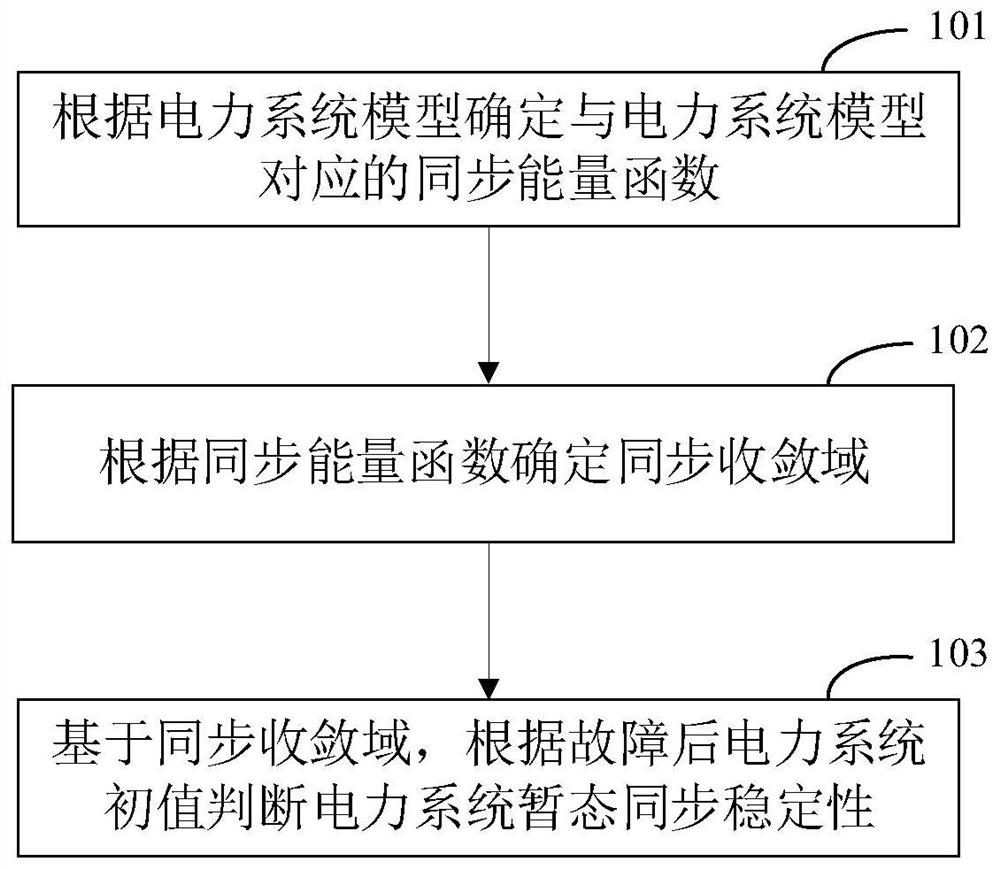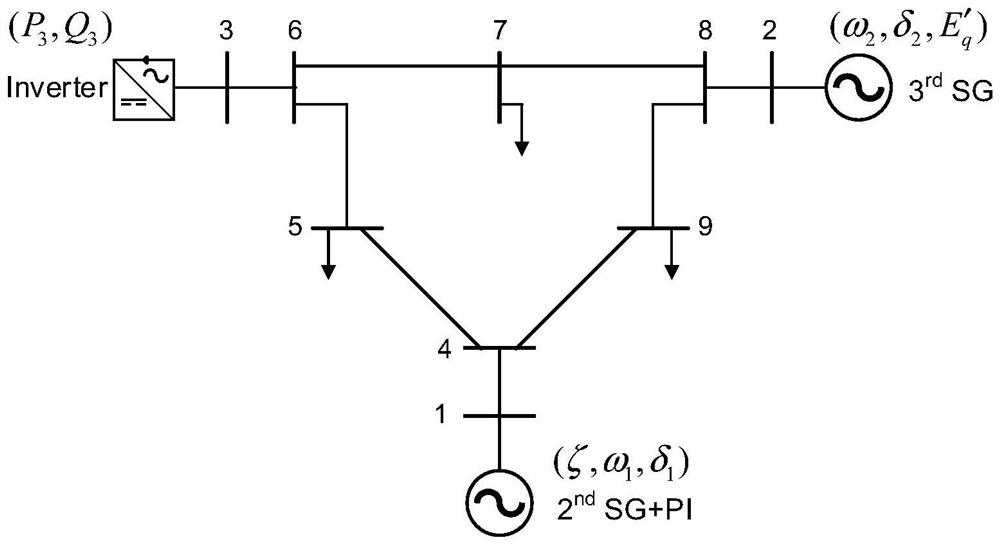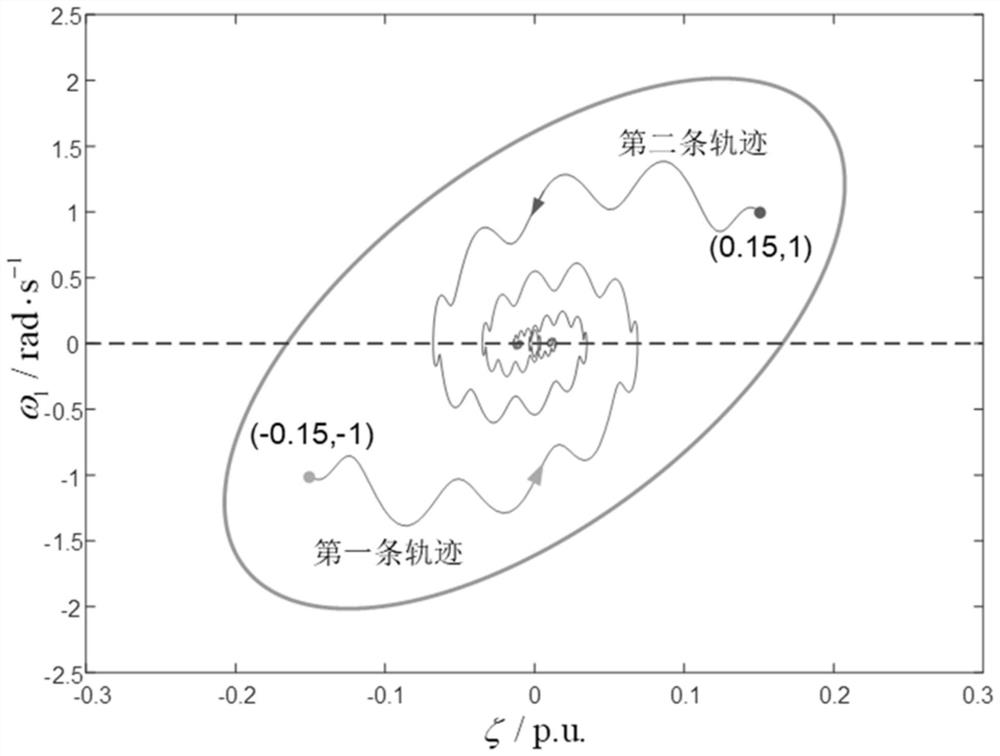Balance point-independent power system transient synchronization stability analysis method and system
A technology of power system and analysis method, applied in information technology support systems, electrical components, circuit devices, etc., can solve problems such as difficult balance points, non-unique system balance points, fluctuations in operating points, etc., and achieve the effect of avoiding simulation calculations
- Summary
- Abstract
- Description
- Claims
- Application Information
AI Technical Summary
Problems solved by technology
Method used
Image
Examples
Embodiment Construction
[0063] Embodiments of the present application are described in detail below, examples of which are shown in the drawings, wherein the same or similar reference numerals denote the same or similar elements or elements having the same or similar functions throughout. The embodiments described below by referring to the figures are exemplary, and are only for explaining the present application, and should not be construed as limiting the present application. On the contrary, the embodiments of the present application include all changes, modifications and equivalents falling within the spirit and scope of the appended claims.
[0064] It should be noted that, in mathematics, the transient stability of the current power system is studied through the framework of Lyapunov stability theory. Under this theoretical framework, the power system after a fault is firstly modeled as a set of ordinary differential equations (ODEs) or differential algebraic equations (DAEs). The equilibrium ...
PUM
 Login to View More
Login to View More Abstract
Description
Claims
Application Information
 Login to View More
Login to View More - R&D
- Intellectual Property
- Life Sciences
- Materials
- Tech Scout
- Unparalleled Data Quality
- Higher Quality Content
- 60% Fewer Hallucinations
Browse by: Latest US Patents, China's latest patents, Technical Efficacy Thesaurus, Application Domain, Technology Topic, Popular Technical Reports.
© 2025 PatSnap. All rights reserved.Legal|Privacy policy|Modern Slavery Act Transparency Statement|Sitemap|About US| Contact US: help@patsnap.com



